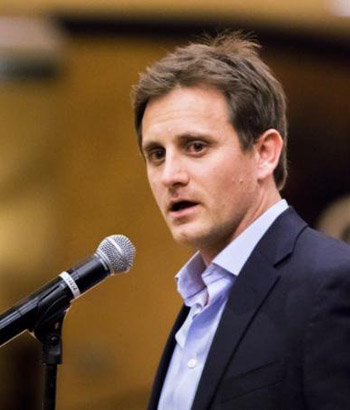Our latest interview is LiveRowing’s founder Nick Sheedy. He’s 31, a dad and a graduate from the University of Oklahoma 2008 – Economics. He’s been passionate about technology and business for as long as he can remember. Having grown up in an entrepreneurial family, Nick is familiar with conversations on growth, gross margins and product. LiveRowing is his first personal venture. Here’s what he had to say…
How would you pitch your company? What’s your elevator pitch?
LiveRowing set out to take the isolation out of indoor rowing and connect people. So if you just zoom out and look at the computers that run the indoor machines – they are typically centered around a time and/or a distance. In the case of the treadmill most people jump on, pick a distance like 3 miles or a time like 30min.
Exercise is an important part of our day and health – so these data points should be tracked, analyzed and saved for our records. But the next piece is what changes the game. We introduced social and gamification into the indoor workout… So we allow users to challenge themselves, a friend or we will intelligently pair them with someone around the world. With these new variables we are able to suppress the brain’s reasoning and judgment that often impairs us when exercising. With social gamification we activate the parts of the brain associated with wanting and desire, thus the user’s exercise experience changes for the better unknowingly. People helping people is powerful stuff!
What sets you apart from competitors?
RowPro, also known as Digital Rowing. We took a detailed look at this company. We liked what they were doing generally with racing, data and training. With RowPro you tether your laptop to the rowing machine, and they will probably have more product features than us in the beginning but we believe our ease of use, as a mobile app (compared to laptop) will make for increased adoption in more demographics.
LiveRowing connects wirelessly with the newer rowing machines and tethers to the legacy machines. Having a simple smartphone application enables the everyday, part-time and hopefully those on the margin to jump on the rowing machine and have a connected, social and competitive experience.
LiveRowing has an intra-app social network so it is simple to challenge your friends around the world. We use asynchronous (turn-based) racing to allow users to race on their own time. For example, I could do a 5,000m workout in the morning and send it off as a challenge to you. We capture data from the workout twice a second, meaning when you accept my challenge via “push notification,” it is replayed exactly how I rowed it.
What’s your business model?
We use freemium subscription model. We are also manufacturing a “smart cable” called “LiveRowing Connect” that we will sell to users who have older rowing machines.
Can you share some numbers? How many users do you have?
We are currently in beta.
Where do you see the company going from here?
We want to stay focused on the indoor rowing machine for now. We are currently building similar product to LiveRowing but we are not ready to disclose the details yet.
Where do you see the mHealth industry going?
I believe we are living through the “mobile revolution” right now. We will look back at this period of time similar to that of the industrial or agricultural revolution. Mobile health is going to be a huge part of it. When you zoom out and take a look at the business world you see big data everywhere around us, we can track every nook and cranny of our business, the economy, weather patterns, etc. But when you look at our health — the data is inconsistent, fragmented and typically lost — i.e. who tracks and analyzes their heart rate, blood pressure and hydration? mHealth mixed with wearables will make this possible. We will finally have BIG DATA on ourselves. mHealth will be able to tell us to drink a glass of water, when our heart rate is getting to high, etc. These incremental changes in our behavior and proactive advice from mHealth will change health forever.
How long are we from seeing modern mHealth technologies going mainstream?
I think we are in the “PalmPilot” phase right now. So soon but not right around the corner.
